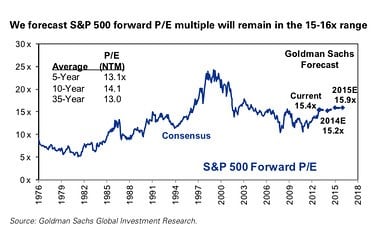Since the housing bubble popped five years ago, mortgage lenders have been reluctant to lend. The banks held on through the devastating loses and are now cautiously finding themselves in a position to begin lending again. One of the reasons for banks being so cautious in mortgage lending now is that Freddie Mac, Fannie Mae and the FHA have been pressing lenders to buy back home loans that went bad after the crisis.
Another reason lenders remain cautious is in part because of financial reform rules. Under the 2010 Dodd-Frank law, mortgage borrowers must meet eight strict criteria including earning enough income and having relatively low debt. If the borrower doesn't meet those hurdles and later defaults on a mortgage, he or she can sue the lender and argue the loan should never have been made in the first place.
Those kinds of rules have helped build a wall between prime and subprime borrowers. Lenders have been soliciting consumers who are legally easier to serve, and avoiding those with weaker credit scores and other problems. Subprime borrowers accounted for 0.3 percent of new home loans in October, compared with an average of 29 percent for the 12 months ended February 2004, according to Mark Fleming, the chief economist of CoreLogic (CLGX).
As part of these rules, the lender must collect and verify a borrower's financial information. The lender has to check the information using reliable documents, such as a W-2 or a paystub. The lender generally must consider eight types of information:
1. Current income or assets.
2. Current employment status.
3. Credit history.
4. The monthly payment for the mortgage.
5. Monthly payments on other mortgage loans borrowers get at the same time on the same property.
6. Monthly payments for other mortgage-related expenses (such as property taxes)
7. Other debts.
8. Monthly debt payments, including the mortgage, compared to monthly income (“debt-to-income ratio” which cannot be more than 43% or $43 for every $100.) The lender may also look at how much money is left over each month after paying debts.
Thanks to the Consumer Financial Protection Bureau, some other new rules that became effective in January include:
Restrictions on dual tracking. In the past, borrowers dealing with mortgage troubles sometimes found that their mortgage servicer had moved forward to foreclose on their home at the very same time it was working with them on a potential loan modification. That’s called “dual tracking” and the new rules set up clear guidelines that restrict this practice.
More help for troubled borrowers. Too often borrowers have had to apply over and over again for programs that might help them keep their homes, being asked to send in the same paperwork repeatedly. The new rules require mortgage servicers to evaluate a borrower who files a complete application for help for all the options that are available to that borrower. That means no more multiple rounds of applications and wasting of precious time and resources for the homeowner seeking help!
No more runarounds and missing documents. The rules require mortgage servicers to train their people to answer borrower's questions and, if the borrower does run into trouble, the servicer has to assign people to help them. The servicer also has to have policies in place to make sure they don’t lose their paperwork.
As mortgage revenue continues to decline, lenders such as Wells Fargo are now even considering borrowers with credit scores as low as 600 - in the past, 640 was the lowest they would consider. Lenders have plenty of incentive for reaching lower on the credit spectrum now; since the middle of last year, interest rates for mortgages have been rising and are expected to reduce the total U.S. Mortgage lending for 2014 by 36%- down to $1.12 trillion. According to the Mortgage Bankers Association, this is due to a large drop in refinancing.
A recent report from the Urban Institute and Moody's Analytics argued that a full recovery in the housing market "will only happen if there is stronger demand from first-time homebuyers. And we will not see the demand needed among this group if access to mortgage credit remains as tight as it is today."
To be sure, credit is still only trickling down to subprime borrowers. Jamie Dimon, chief executive of the second-largest U.S. mortgage lender JPMorgan Chase, said on a conference call last month that he didn't envision a "dramatic expansion" of mortgage credit because of a continued lack of clarity from the government agencies on their repurchase demands.”
But smaller, non-bank lenders are making more loans. One such company, ACC Mortgage in Maryland, is offering a "Low Credit Score Debt Consolidation Program" as well as a "Second Chance Purchase Program." Low credit scores don't matter, neither do bankruptcies, foreclosures nor short sales.
While it is good to see the lenders starting to come back to the table, there is yet another factor that needs to be considered: Will the borrowers come to the table - and more specifically, the first-time home buyers who are essential to the housing market recovery? The pundits believe that there is a large amount of pent-up demand for housing that will boost economic growth for quite some time into the future. While this may be the case in theory, it is based upon assumptions that "past is prologue". However, given the current economic dynamics of stagnant wage growth, the structural employment shift, as well as the unknown consequences of the Affordable Care Act that seems to be paralyzing small businesses, it is unlikely that the consumer will be able to re-lever their budget as in the past.
The rising risk to the housing recovery lies in the Fed's ability to continue to keep interest rates suppressed. It is important to remember that individuals "buy payments" rather than houses. Every increase in the mortgage rate results in an increase of the monthly mortgage payment. With wages remaining suppressed, 1 out of 3 Americans no longer counted as part of the work force, or drawing on a Federal subsidy, the pool of potential buyers remains constrained. While there are many hopes pinned on the housing recovery as a "driver" of economic growth in 2014, the data suggests otherwise; the real driver of an economic recovery is full time employment that leads to rising wages and savings.
So while there have been many changes made to the mortgage industry, many favoring the borrower and ensuring that the problems that lead up to the collapse don't happen again, without the other economic factors in place securing a borrower’s ability or stability, it is unlikely that the banks and the housing market will see the kind of rebound that they are needing.



 Merry Christmas to everyone who happens to read this blog. I hope that the joy of the birth of the baby Jesus brings peace to your hearts in the coming year. His birth is truly one of the most significant events in all of human history. For it ushered in the atonement that he performed on our behalf, which allows each of us to be forgiven of our sins. He also brought about the resurrection from the dead, now what had been prophesied for thousands of years was now a reality.
Merry Christmas to everyone who happens to read this blog. I hope that the joy of the birth of the baby Jesus brings peace to your hearts in the coming year. His birth is truly one of the most significant events in all of human history. For it ushered in the atonement that he performed on our behalf, which allows each of us to be forgiven of our sins. He also brought about the resurrection from the dead, now what had been prophesied for thousands of years was now a reality.
 thing you can’t afford.
thing you can’t afford. It has been nearly 400 years since the first Thanksgiving was held in Plymouth. I don’t think the pilgrims knew what they were starting – or how the holiday has evolved, perhaps they would not be pleased either. The original idea was for it to be three days of thanksgiving and prayer for our bountiful blessings in this great land. Now it’s a day of amazing feasting and preparation for the biggest shopping day of the year! Maybe someplace in the mix are a few prayers.
It has been nearly 400 years since the first Thanksgiving was held in Plymouth. I don’t think the pilgrims knew what they were starting – or how the holiday has evolved, perhaps they would not be pleased either. The original idea was for it to be three days of thanksgiving and prayer for our bountiful blessings in this great land. Now it’s a day of amazing feasting and preparation for the biggest shopping day of the year! Maybe someplace in the mix are a few prayers.



